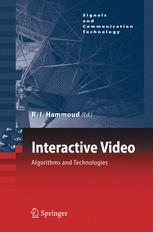

Most ebook files are in PDF format, so you can easily read them using various software such as Foxit Reader or directly on the Google Chrome browser.
Some ebook files are released by publishers in other formats such as .awz, .mobi, .epub, .fb2, etc. You may need to install specific software to read these formats on mobile/PC, such as Calibre.
Please read the tutorial at this link: https://ebookbell.com/faq
We offer FREE conversion to the popular formats you request; however, this may take some time. Therefore, right after payment, please email us, and we will try to provide the service as quickly as possible.
For some exceptional file formats or broken links (if any), please refrain from opening any disputes. Instead, email us first, and we will try to assist within a maximum of 6 hours.
EbookBell Team

4.0
6 reviewsThis is a groundbreaking resource that covers both algorithms and technologies of interactive videos, so that businesses in IT and data managements, scientists, teachers, and software engineers in video processing and computer vision, coaches and instructors that use video technology in teaching, and finally end-users of hyper videos will greatly benefit from it. This comprehensive four part book contains excellent scientific and up-to-date contributions made by a number of pioneering scientists, futurists and experts in the field. The first part introduces the reader to interactive and hyper video rhetoric, algorithms and technologies. It also presents effective automatic audio-video summarization methodologies. In the second part, a list of advanced computer vision and signal processing algorithms and systems for automatic and semiautomatic analysis and editing of audio-video documents are presented. The third part tackles a more challenging level of the transformation from raw to enriched video format, filtering of the video content by extracting and linking of highlights, events, and meaningful semantic units. In particular, a detailed example of the Computational Media Aesthetics approach at work towards understanding the semantics of instructional media through automated analysis for e-learning content annotation is presented. The last part is reserved for interactive video searching engines, non-linear video content browsing and quick video navigational systems.